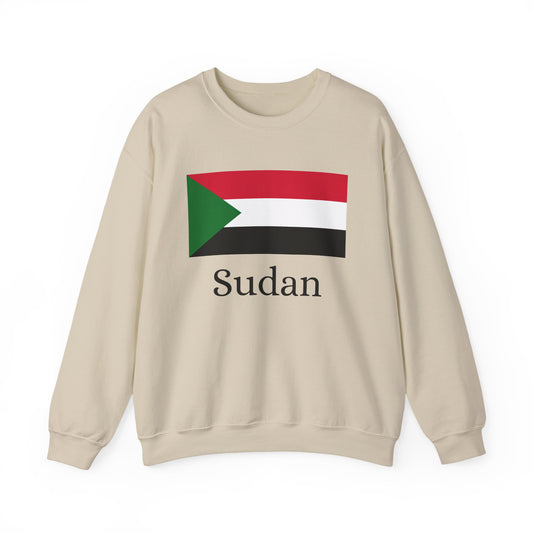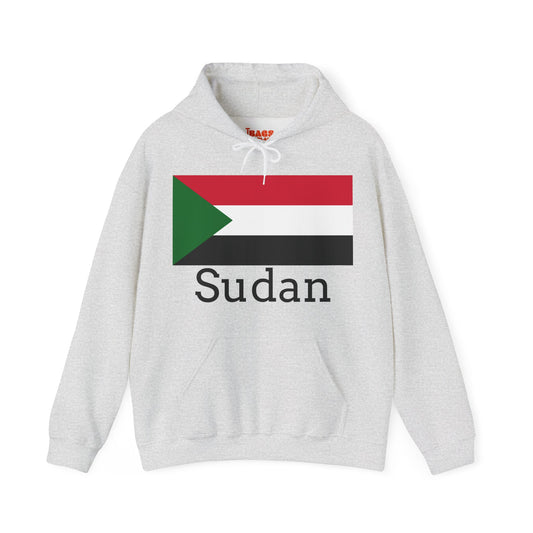-
Sudan Sweatshirt
Regular price $34.15 USDRegular priceUnit price / per -
Sudan Flag Sweatshirt
Regular price $34.15 USDRegular priceUnit price / per -
Sudan Pillow
Regular price $22.65 USDRegular priceUnit price / per -
Sudan Backpack
Regular price $59.79 USDRegular priceUnit price / per -
Sudan Leather Patch Hat
Regular price $18.85 USDRegular priceUnit price / per -
Sudan Trucker Cap
Regular price $14.90 USDRegular priceUnit price / per -
Sudan Hoodies
Regular price $34.40 USDRegular priceUnit price / per -
Sudan T-shirts
Regular price $22.79 USDRegular priceUnit price / per -
Sudan Flag Hoodies
Regular price $34.40 USDRegular priceUnit price / per -
Sudan Flag on T-shirt
Regular price $22.79 USDRegular priceUnit price / per
Collection: Sudan
The Sudan flag symbolizes pride and identity for the people of Sudan. Its design and colors hold significant meanings that reflect the country's history and culture. We will explore the untold stories of the Sudan flag, delving into lesser-known facts and unique protocols associated with this national emblem.
Overview of the Sudan Flag

The flag of Sudan is distinguished by its bold tricolor scheme, composed of horizontal stripes that carry deep meanings tied to the nation's identity. At the top is a vivid red stripe, symbolizing the country's long struggle for freedom and independence. This is followed by a pure white stripe in the middle, representing peace and the hope for a brighter future. Anchoring the flag is a black stripe at the bottom, signifying the resilience and determination of the Sudanese people to overcome adversity.
Complementing these stripes is a prominent green triangle positioned at the hoist side of the flag. This triangle not only underscores the importance of Islam in Sudanese culture but also highlights the country's agricultural wealth and aspirations for prosperity. Together, these elements weave a rich tapestry of symbolism, reflecting Sudan's aspirations, challenges, and cultural heritage.
Historical Context: The Evolution of the Sudan Flag
The journey of the Sudan flag to its current design is a narrative interwoven with the nation's quest for identity and sovereignty. Officially adopted on May 20, 1970, the flag's inception was a direct consequence of significant political changes following the overthrow of President Ismail al-Azhari's government. This event marked a turning point, establishing a flag that symbolized a new era for Sudan. The chosen design drew inspiration from the Arab Liberation Flag, echoing the broader aspirations of the Arab Liberation movement, which sought to unite Arab nations under the banner of freedom from colonial rule and foreign domination.
The colors of the flag were specifically selected to resonate with the themes of struggle, peace, and prosperity, aligning with the ideals of the movement. However, the flag witnessed a notable alteration on May 9, 2005, when a gold star was introduced. This addition was not merely aesthetic but imbued with deep political significance, symbolizing Sudan's unity amidst its diverse cultural and ethnic landscape. This change came at a critical juncture in Sudan's history amidst efforts to heal the rifts caused by prolonged internal conflicts and to foster a sense of national cohesion. Therefore, the evolution of the Sudan flag mirrors the nation's tumultuous journey towards unity, peace, and self-determination, encapsulating the hopes and challenges that have shaped Sudan's modern history.
Symbolism: Decoding the Colors and Design of the Sudan Flag

The Sudan flag's tricolor scheme and green triangle are rich in symbolic significance, and each element is carefully chosen to convey deep national narratives and ideals. The red stripe at the top of the flag echoes the bloodshed in the country's long struggle for independence, a poignant reminder of the sacrifices made to pursue sovereignty. The white stripe that follows symbolizes peace and reflects the country's aspirations for a harmonious and prosperous future.
Beneath these, the black stripe serves as a tribute to the resilient spirit of the Sudanese people, symbolic of their unwavering determination to rise above historical adversities. The prominent green triangle at the flag's hoist side is multifaceted in its symbolism: it stands as a testament to the significance of Islam in shaping the cultural and spiritual landscape of Sudan, a nod to the country's agricultural bounty which is foundational to its economy, and a symbol of the prosperity that the nation strives toward. Each color and the green triangle thus encapsulate themes of struggle, hope, resilience, faith, and prosperity, weaving a complex story of a nation's past, present, and envisioned future.
Current Relevance: The Sudan Flag in Today's World
In the contemporary landscape, the flag of Sudan remains a potent emblem, serving as a focal point during significant national events, military ceremonies, and official government functions. It waves as a banner of unity and pride, encapsulating the aspirations and resilience of the Sudanese people. Amidst the nation's political turmoil and social unrest, the flag also symbolizes protest and hope. Citizens often rally under its colors to voice their demands for justice, democracy, and peace, illustrating the flag's evolving role as a state symbol and an icon of popular resistance and aspiration.
Its presence at demonstrations and in public spaces underscores the deep connection between the flag and the ongoing struggles and dreams of the Sudanese populace. The flag's current relevance extends beyond formal settings, permeating the fabric of everyday life and the nation's collective consciousness, highlighting its enduring significance in shaping Sudan's identity and future.
Additional Facts: Unique Protocols and Anecdotes Related to the Sudan Flag
When it comes to displaying the Sudan flag, certain protocols underscore the respect and honor it commands within the nation. A particularly important guideline is ensuring the flag never makes contact with the ground, a practice rooted in the tradition of treating national symbols with the highest esteem. This respect extends to keeping the flag from draping or falling onto objects below it, highlighting the solemn reverence Sudanese people hold for their emblem of national identity.
Furthermore, during periods of mourning, such as the loss of significant national figures or in the wake of national tragedies, the Sudan flag is flown at half-mast. This practice serves as a visual expression of grief and solidarity, reflecting the nation's collective heartache during times of sorrow.
An intriguing aspect of the flag's cultural significance is the emotional bond it fosters among the Sudanese. This deep-seated connection goes beyond the flag's physical representation, embodying the collective hopes, struggles, and resilience of the people. It's not just a piece of fabric; it's a beacon of aspiration and unity, especially poignant in moments of national challenge or achievement. This profound relationship between the flag and the people it represents is a testament to the enduring power of national symbols in shaping and expressing collective identity.






















